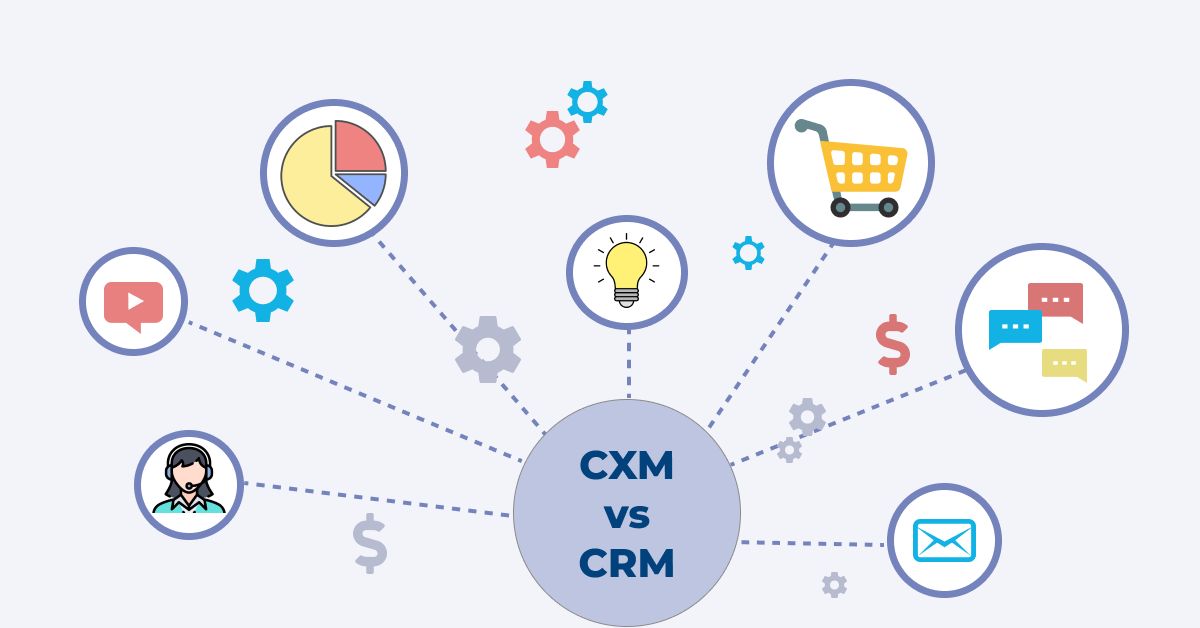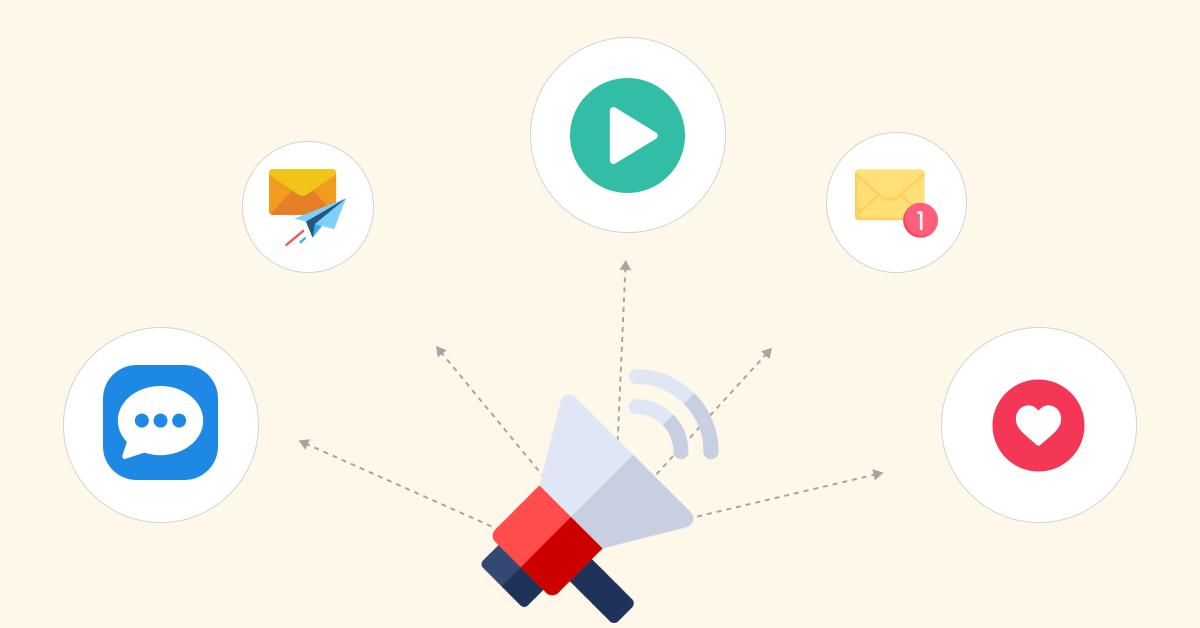What kind of customer communication approach drives more sales? Every business is looking for ways to improve performance and maximize leads. Enter omni channel customer communication: a modern way of staying connected with customers using multiple devices, channels, and media.
Companies that delivered strong omni channel communication retained 89% of their customers. The era of omni-channel customer communication is revolutionizing how businesses interact with customers.
Companies that invest in omnichannel communication strategy receive two times more conversions. It makes it easier for them to address customers’ needs in a timely and efficient manner. As such it reduces time spent on inquiries and saves money by automating responses.
Let us discuss the tools, benefits, and different examples of omni-channel customer communication strategies that can drive sales and increase revenue for your business.
Omni Channel Customer Communication: Definition
Omnichannel customer communication refers to a strategy that considers the entire “customer journey”: from pre-sales questions to post-sales support inquiries. Its objective is to provide customers with a consistent and personalized experience across multiple channels such as social media messages, web forms, live chats, emails, phone calls, etc.

The omnichannel communication approach allows customers to use any channel they feel most comfortable or convenient with without having to repeat themselves or wait days on end for an answer.
Purpose of Omnichannel Customer Communications
- Provide tailored and personalized experiences for customers in real time
- Anticipate and facilitate customer requests quickly
- Engage customers in meaningful conversations through intelligent routing
- Reduce response time for critical issues
- Ensure higher levels of customer satisfaction
What is an Omnichannel Communication Software?
An omnichannel communication platform is defined as an integrated approach to customer marketing that combines multiple channels into one platform. It allows businesses to create a unified and seamless customer experience regardless of the communication channel used.
Businesses, by being omnichannel can provide customers with personalized interactions on any device or medium, with content tailored for each individual. This gives customers the choice and convenience to engage when and how they want, enabling companies to provide optimal customer experiences that create loyal relationships.
Why Do You Need Omni Channel Communication Software?
Omnichannel customer communication is a “unified customer experience” approach that companies can adopt to better engage with their customers. Deploying an omnichannel communication software helps businesses in delivering consistent experience to customers across any channel in the entire journey.
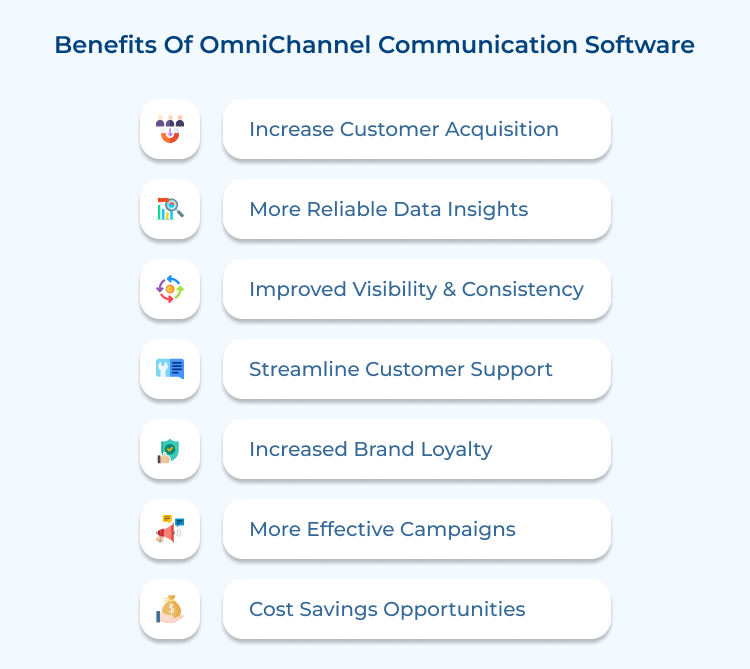
Here are some key benefits that companies can enjoy from adopting an omnichannel customer communication strategy.
- Increase Customer Acquisition: Reach more prospects through multiple channels to increase conversions.
- More Reliable Data Insights: Integrate customer data from all platforms and receive more reliable reports to make informed decisions about your brand or business.
- Improved Visibility & Consistency: Customize omnichannel content according to desired look and feel to increase visibility among target audiences.
- Streamline Customer Support: Reduce turnaround times and respond faster to customers’ issues with automated help desk integration tools built into Omnichannel strategies for quick resolution..
- Increased Brand Loyalty: Create better relationships with customers by providing personalized experiences that meet their preferences in order to create a loyal customer base who turn into ambassadors for your brand.
- More Effective Campaigns: Create content tailored around individual customers’ needs across different channels for improved effectiveness in campaigns leading to higher ROI and conversions
- Cost Savings Opportunities: Reduce costs associated with marketing campaigns and general lead generation activities while capturing maximum value away from each interaction made through Omnichannel approaches
Top Omnichannel Communication Platforms & Tools to Try
Customers interact across multiple channels and hence businesses need to ensure that they are giving consistent experiences at every interaction.
Companies that use a communication platform reduce their cost of service by 15-20%.
Here are a few omnichannel customer communication platforms and tools that can help your business.
Omni24 is an omnichannel customer experience platform that helps businesses unify their customer communication across all channels. Its user-friendly interface and comprehensive analytics make it a top choice for businesses looking to enhance their customer communication strategies.
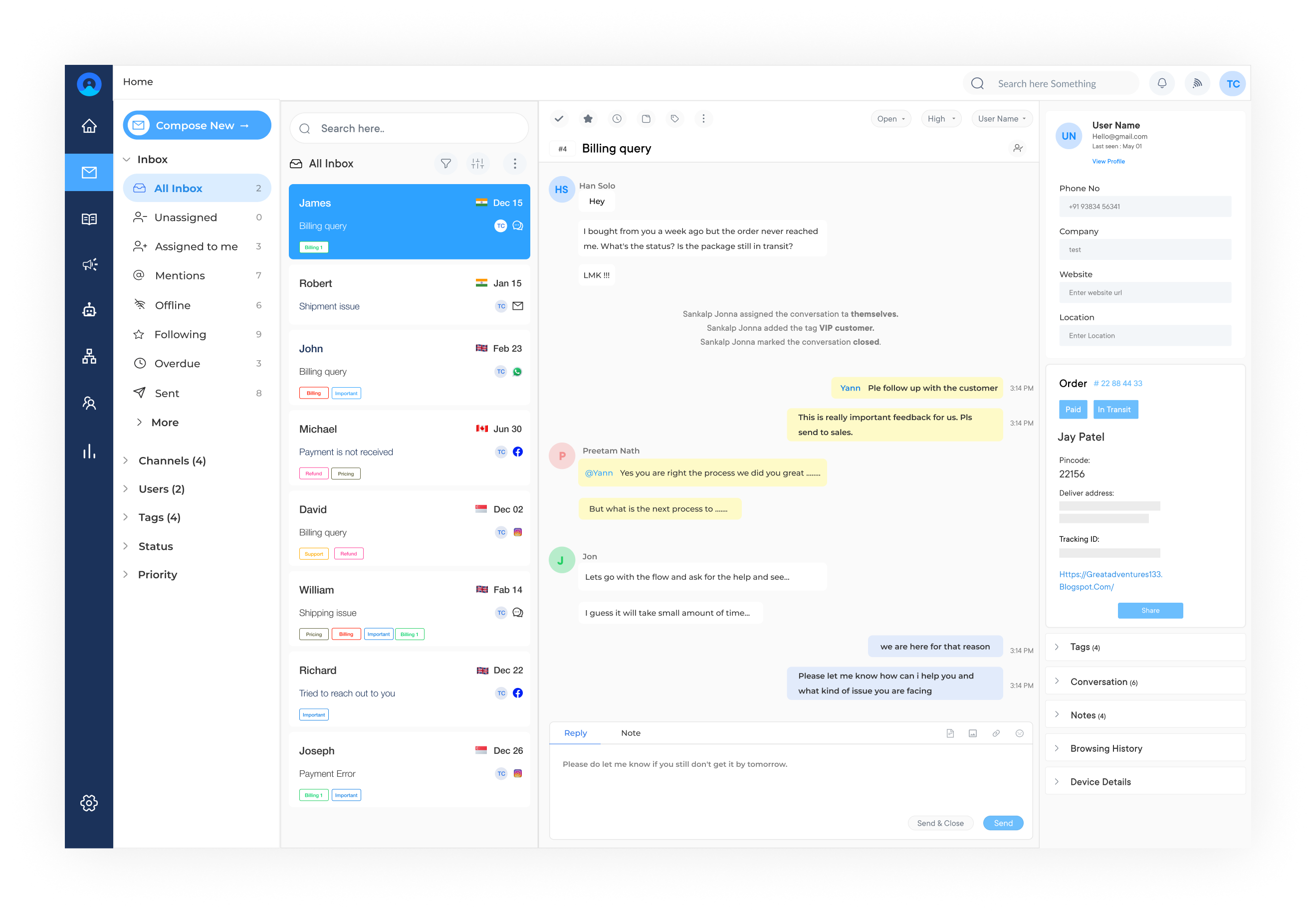
Key features of Omni24 as an omnichannel communication platform include:
- Omnichannel Communication: Seamlessly engage with customers across multiple channels like live chat, email, social media, SMS, and more.
- Help Desk & Ticketing Management: Centralize customer inquiries into tickets, streamline workflows, and ensure timely resolution.
- Knowledge Base: Create a self-service hub of information, FAQs, and guides, empowering customers to find solutions independently.
- Email Marketing: Design and execute personalized email marketing campaigns, driving customer engagement and boosting sales.
- Chatbot Automation: Leverage AI-powered chatbots to provide instant and personalized responses to customer queries, 24/7.
- Live Chat: Engage with customers in real time, offering support and assistance to resolve queries instantly.
- Reporting and Analytics: Gain valuable insights into customer interactions, agent productivity, and overall performance to drive improvements.
Pricing: Omni24 offers a 14-day free trial and offers four subscription plans – (i) Standard at $34/user/month (ii) Professional at $64/user/month (iii) Ultimate at $114/user/month (iv) Enterprise $169/user/month
Veemo offers a conversational engagement suite that helps businesses streamline their customer interactions across multiple channels. With features designed to enhance customer engagement and streamline communication processes, Veemo is a complete omnichannel communication platform that provides exceptional customer experiences at scale.
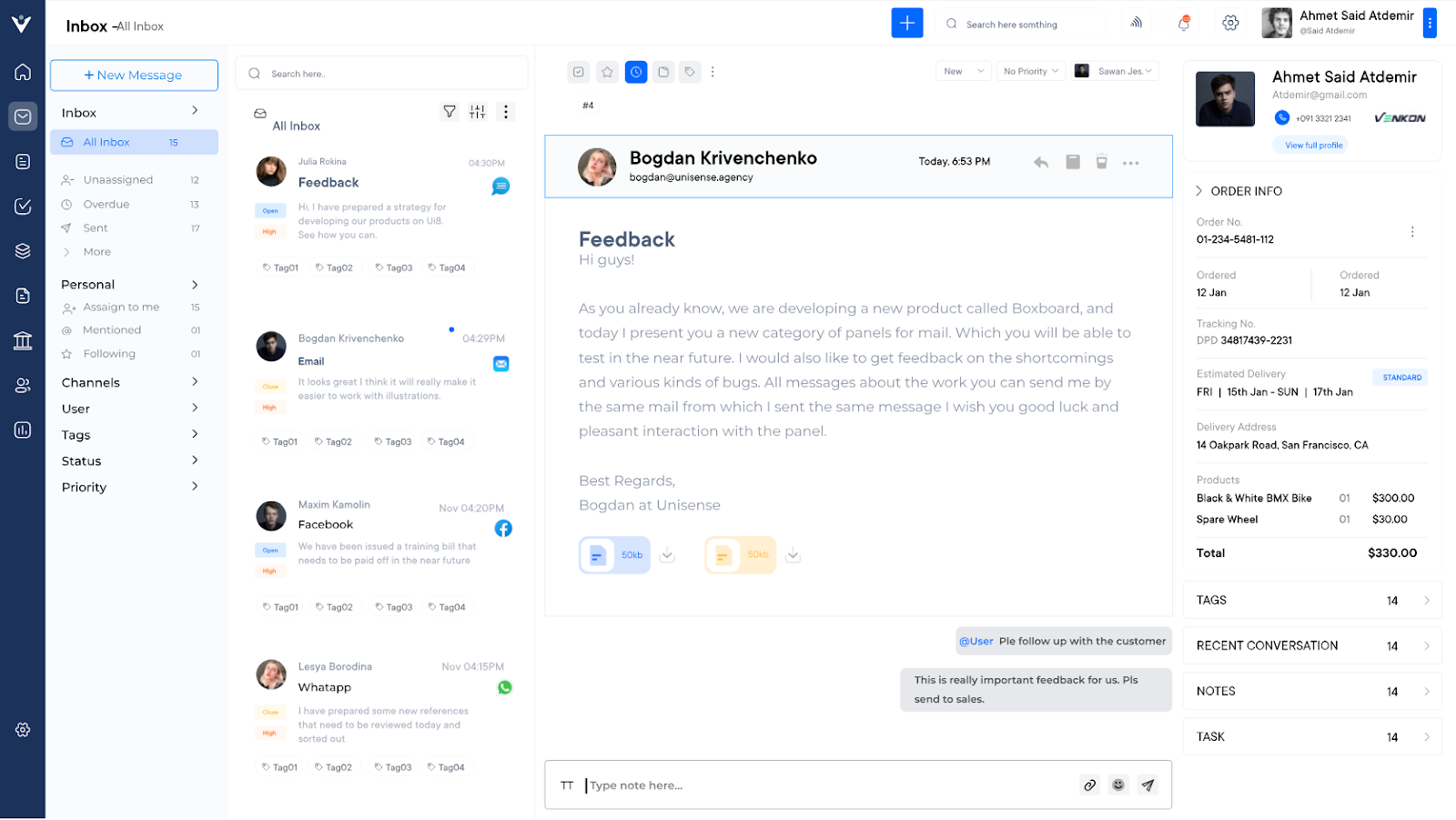
Key features of Veemo as an omnichannel communication platform include:
- Omnichannel Inbox: Easily manage customer conversations across various communication channels like email, chat, phone, social media, and more, all in one centralized inbox.
- Automated Routing: Ensure that customer queries are seamlessly assigned to the right team or agent based on their skill set, ensuring faster response times and better resolution.
- Knowledge Base: Create a centralized repository of frequently asked questions and support articles to empower customers with self-service options and reduce support ticket volume.
- Chatbots and AI Assistants: Leverage AI-powered chatbots to provide instant responses, automate routine tasks, and offer personalized recommendations, driving efficiency and enhancing the customer experience.
- Real-time Reporting and Analytics: Gain valuable insights into customer interactions, agent performance, and response times to identify areas of improvement and optimize customer support strategies.
- Integrations: Integrate Veemo with other popular business tools and platforms, such as CRM systems and helpdesk software, for a seamless flow of customer data and enhanced efficiency.
Pricing: Vemmo offers a 14-day free trial for its customers. There are 4 subscription plans available that are billed annually- (i) Growth at $19/ user/month billed annually (ii)Team at $59/user/month (iii) Premium at $79/user/month (iv)Enterprise at $109/user/month
Genesys
Genesys is an end-to-end customer experience management solution that enables businesses to understand their customer’s omni-channel interactions better and act accordingly in order to upsell them effectively in real time.
The innovative tools include Virtual Agents powered by Machine Learning algorithms that automate complex processes while understanding customer needs with personalization and accuracy at unprecedented speeds.
It is a sophisticated reporting system that regularly collects and analyses required metrics needed for businesses to make informed decisions about future investments or product improvements, etc.
ZenDesk
ZenDesk is an integrated tool technology platform designed for support teams looking for an efficient way to respond to their customers’ inquiries across all channels in real-time without compromising quality or speed of delivery.
Automated routing methods ensure easy handling of incoming queries over multiple digital channels including social media making sure customers don’t need to wait for long times for get a reply from a concerned person on the other side
HelpCrunch
Helpcrunch is a customer service application that helps companies improve their customers’ satisfaction rate while decreasing churning rate across the board by building close relationships between the customer service agent and consumers through detailed profile knowledge leverage driven by multidimensional analytics techniques.
Customers can thus expect expert guidance tailored precisely according to individual purchase data instead of common generic answers as well as effortless cross-channel communication.
Best Practices to Implement Omni Channel Communication Strategy
Shifting to an omnichannel communication strategy ensures accessibility across channels and helps put the customer experience at the forefront. We have summarized some of the best practices to implement a powerful omnichannel customer communication strategy.
- Understanding Your Customers
- Utilize Relevant Data.
- Choose Suitable Platforms
- Develop a Consistent Message
- Design Personalized Experiences
- Monitor & Measure Your Performance
- Alternate Communication Channels
- Evaluate Your Strategies Regularly
Let us know each of the omni-channel communication best practices in detail:
1. Understanding Your Target Audience
Businesses that adopt omnichannel communication strategies are supposed to understand their target audience. It will allow you to create an omnichannel communication strategy that is customized to your target audience.
When you understand your customer needs, expectations, and pain points, you are able to align your products/services/solutions accordingly.
Takeaways:
- Understanding your buyers’ journey will also help you determine what your audience’s preferred channels are at each stage.
- Once you identify your channels, you must develop a brand voice. Whether you’re marketing a new product or offering support consistency is very important across these channels.
- These channels should also provide timely responses so customers don’t have to wait for a response.
2. Utilize Relevant Data
Collecting customer data is another best practice for creating an omnichannel communication strategy.
You can gather relevant data such as market trends, customer habits, and user experience insights from various sources. It will help you to better understand the needs of your customers.
Using customer data enhances omnichannel communication:
Takeaways:
- Better understanding of the customer journey – Provides a 360-degree view of the previous interactions and helps agents to understand the customer journey better. Understanding all touchpoints will help you to act proactively across the behavioral stages of the customers.
- Quick decision-making with the right insights – By analyzing the insights, the agents can make faster decisions to assist the customers better and deliver a great customer service experience.
- Create self-service options – The collected data insights can be used to outline better strategies to deliver effective real time support with the right channel to improve customer experience along with enhancing self-service portals.
3. Choose a Suitable Omnichannel Communication Platform
When creating an omnichannel communication strategy, the right platform is very very important!
It is essential for businesses to choose suitable platforms for both approaches out of traditional media channels like email, text, or phone as well as modern ones like chatbots, social media platforms, and apps, etc.
Depending upon the industry the target audience also differs. Based on your customers you need to choose the platform that will help you to engage them in real time for developing their trust and loyalty in your business.
4. Develop a Consistent Brand Messaging
Companies that provide consistent service quality across multiple channels retain 89% of their channels regardless of the platform used by the user.
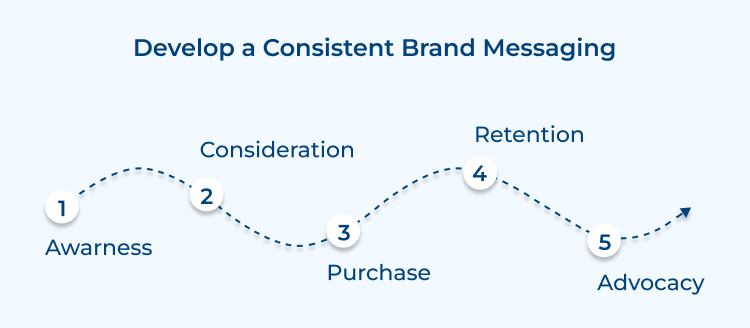
Walgreens invested in an omnichannel communication approach so that customers are able to go online, offline, and back online again to a mobile phone. And that experience should be seamless, and it should be cohesive.
Here is how omnichannel communication strategy helps to deliver a consistent experience
- Identify & streamline channels under a single platform – Learn what your target audience is looking for and identify their preferred channels to reach out to you. Then identify the online & offline communication channels and integrate every outreach method under a single board to eliminate siloed engagements.
- Map customer journey – Mapping the journey helps to gain critical insights on their previous interactions, conversation history, etc. that help to take proactive actions. Based on the insights, you can create a process to deliver customer support with the right channels like self-service portals, live chat, etc.
5. Design Personalized Experiences
Effective consistent personalization is the capability to identify and engage users across multiple touchpoints and it is quite challenging for businesses to achieve that. It requires collecting and unifying customer data from all digital channels under one central location.
An omnichannel experience should be tailored in order to give users the best experience across multiple platforms and devices while still maintaining a unified approach overall.
Omnichannel personalization creates customer experiences that are backed by real-time data from all channels and extends them across every touchpoint, to build consistent customer relationships wherever they interact with the brand.
Here is how omni-channel communication helps to deliver a personalized experience.
- Understand customer needs – Align your services to match customer expectations. Send high-quality communication, consistent with the company’s brand voice, to meet their unique needs.
- Make use of the right etiquette – Create high-volume communications across all channels while leveraging positive language, tone, and customer knowledge that resonates with each individual recipient.
6. Monitor & Measure Your Performance
An omnichannel dashboard empowers your team with real time feedback about their interactions on their customer interactions handled on each channel.
It is important to monitor how your customers are interacting with each channel and measure how successful your strategies are over time in order to adjust them accordingly if necessary.
Having an omnichannel communication strategy helps agents meet the key metrics to improve performance. The key metrics are First Response Time (FRT), Total Resolution Time, Average Response Time (ART), and Missed Chats.
Here is how the omnichannel communication approach improves agents’ productivity.
- Less touchpoints mean less hassle – The insights help agents to understand the customer journey better and all departments have to be constantly aligned to deliver personalized solutions at the first touchpoint.
- Efficiently manage resources – When the first response time is improved, you are able to solve more queries by improving the average response time. You can manage the resources accordingly across different business functions.
7. Alternate Communication Channels
Having alternative communication channels can also be a great omnichannel communication best practice.
Different forms of alternative communication channels such as audio-based messages through voice recordings or video calls instead of regular emails or online chats when appropriate and keep up with emerging trends so that you remain competitive in today’s digital landscape.
It will also help businesses to meet their customer expectations, increase their satisfaction ratio, and maintain their loyalty.
8. Evaluate Your Strategies Regularly
It is very important to measure the omnichannel communication strategies that you are implementing for your business. Evaluating them will provide you with a clear picture of the gray and white areas.
Ensure that you regularly evaluate your omni-channel communication strategies based on feedback from customers and constantly update them for maximum efficiency and effectiveness.
How will evaluating strategies on a regular basis help your business?
- Learn the gaps in strategies and adjust them accordingly
- Know which strategy is effective and which one needs to be changed
- Get to know how are your customers reacting based on their feedback
What You Should Look for in an Omnichannel Communication Platform?
As businesses move away from the traditional methods of customer communication to the more automated digital world, one essential tool they must have is an Omnichannel Customer Communication Platform. It is designed to provide customers with a consistent and seamless user experience throughout their buying journey.
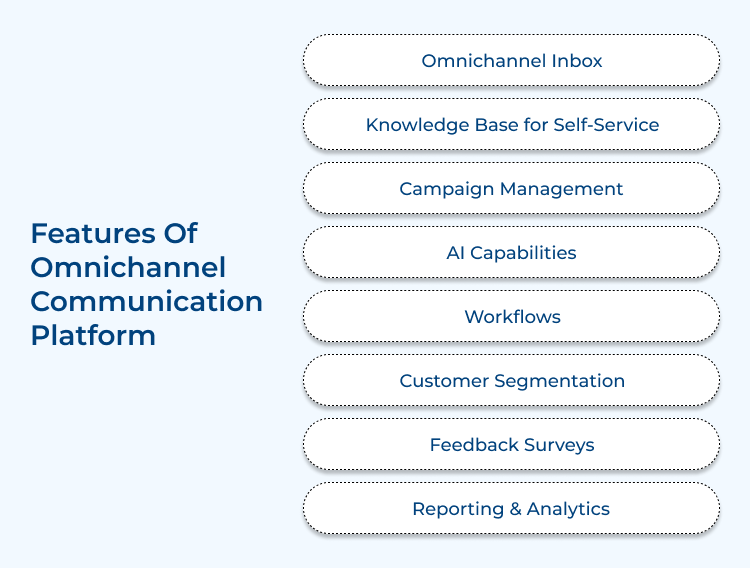
Let us go through the key features of an omnichannel customer communication platform.
- Omnichannel Inbox: Connect with customer conversations across different channels in a single unified inbox and deliver consistent brand messaging.
- Knowledge Base for Self-Service: Drive self-service capabilities through a & comprehensive library of content and resources.
- Campaign Management: Automate marketing campaigns targeting specific customer segments with messages tailored to their needs.
- AI Capabilities: Leverage AI-powered solutions for customer communications, including automated translations, sentiment analysis and reply suggestions.
- Workflows: Streamline customer workflows by easily routing tasks to the right person or team in an organization.
- Customer Segmentation: Easily segment customers based on any criteria such as demographics, purchase history, and more for personalized communications efforts.
- Feedback Surveys: Know your business health by conducting feedback surveys. Know the areas that need improvement.
- Reporting & Analytics: Collect valuable insights from customers via feedback surveys and measure the performance of customer help center operations with powerful reporting tools & analytics.









